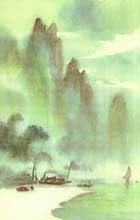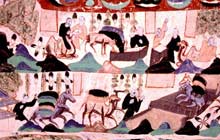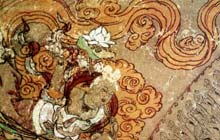"Of the thirty-six West Lakes east or west, the West Lake in Hangzhou is the best."
As this dictum reveals, China has thirty-six West Lakes – in Beijing, Fuzhou, Guilin, etc. – but none are reputed to be as magnificent as the one in Hangzhou. Originally no more than a shallow inlet, this section of the Qiantong River was dredged and dammed in the eighth century to form the lake that exists today. » Read more »
» Read more »Lingyin Temple, or the Temple of Inspired Seclusion, was founded in 326 AD by the Indian monk, Hui Li. It quickly became a center of worship for the Chan (Zen) Buddist sect, and once served as home to more than three thousand monks. During its turbulent history the temple has been destroyed and then restored no less than sixteen times with the current structures dating to the late Qing dynasty (1644-1911).
Before reaching the temple however, » Read more »
» Read more »"They were the oddest hills in the world, and the most Chinese, because these are the hills that are depicted in every Chinese scroll. It is almost a sacred landscape – it is certainly an emblematic one."
Paul Theroux, Riding the Iron Rooster, 1988
When looking at a Chinese painting, most visitors will remark upon the enormous differences from Western painting tradition. Foremost among the differences are the use of ink and silk paper as opposed to oil and canvas, » Read more »
» Read more »
These are the bare facts: the Mogao cave complex is comprised of 492 caves, containing 450,000 square feet of murals dating from the fourth to the fourteenth centuries – a period which corresponds to an immense growth in international commerce along the nearby Silk Road. The caves were abandoned in the fourteenth century and lay untouched until the beginning of the twentieth century.
These facts presume ten centuries of consecutive public works programs of astonishing financial proportions and startling logistical complications. » Read more »
» Read more »By Guy Rubin
Centuries ago, in a cliff-face in the midst of China's vast Taklamakan desert, artists hollowed, sculpted and painted 492 caves, creating over 450,000 square feet of spectacular murals, or more than thirty times the mural area of the Sistine Chapel. But whereas the Sistine Chapel was painted over a few years, the works at the Mogao Caves began in the fourth century and were completed over the next millennium. » Read more »
» Read more »



